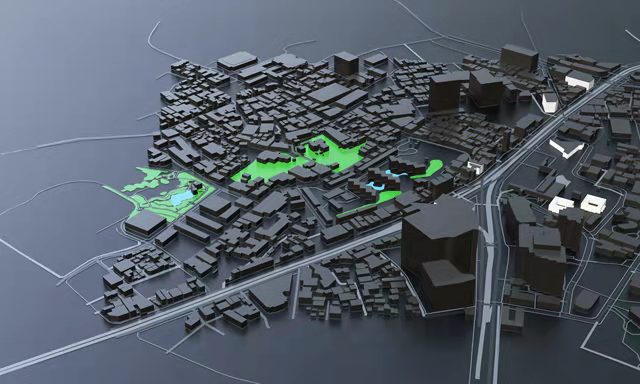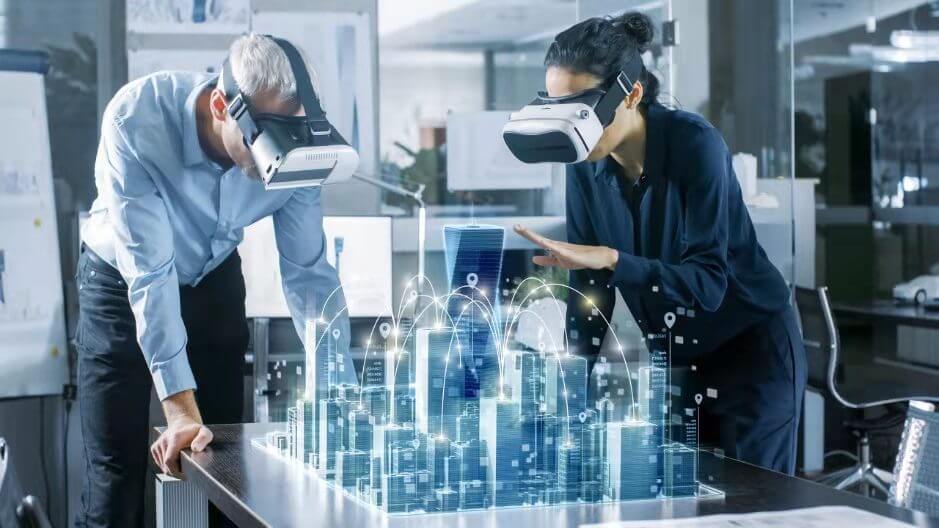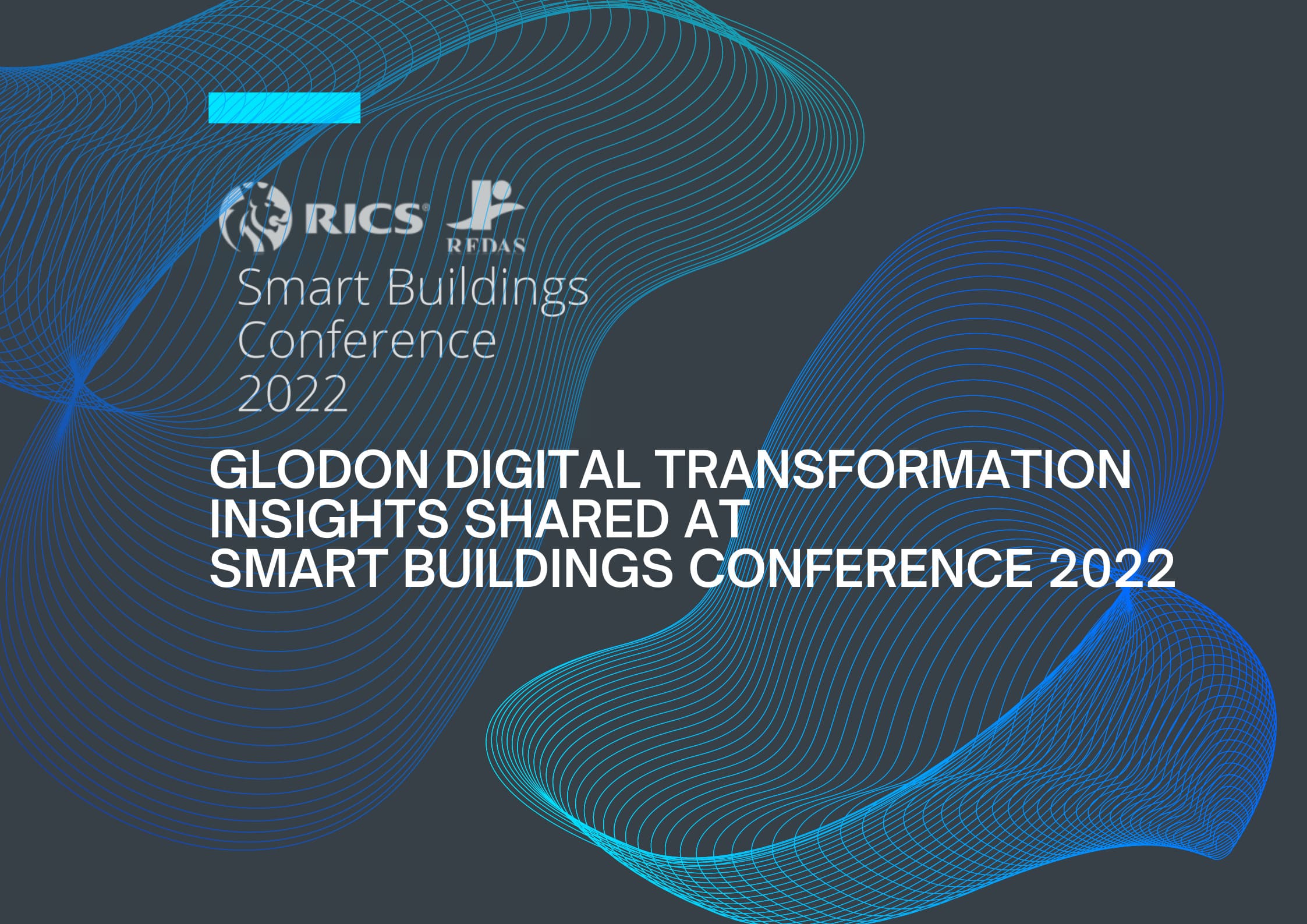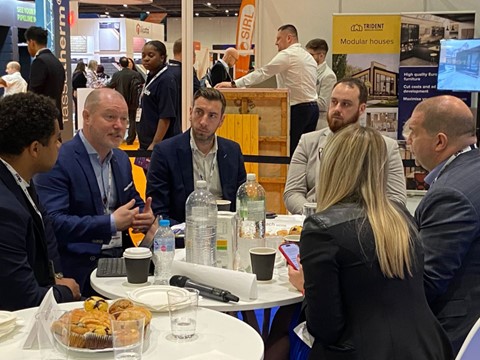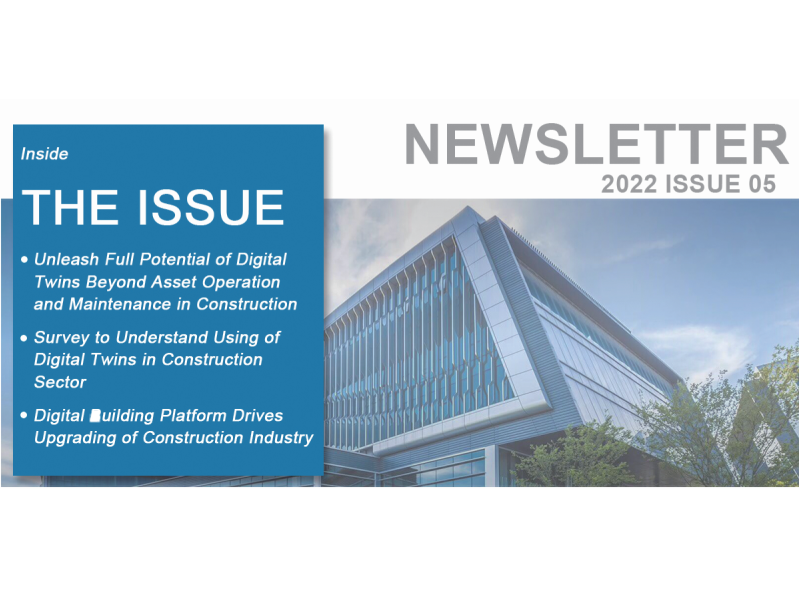Jun 01.2022
Unleash Full Potential of Digital Twins Beyond Asset Operation and Maintenance in Construction
Digital twins are virtual representations
of real-world assets and phenomena. It is a federated entity of synchronised
data streams that give us situational awareness of what is happening and why.
A digital twin has several use-cases. “It allows us to simulate and animate our physical environment’s technical and social performance based on real-time data,” said Salla Eckhardt, Director of Transformation Services at Microsoft. It also enables us to analyse how our environment performs in daily operations and what are the short-term or long-term implications of that performance.

Figure 1 : Illustration of a digital twin
Current
State of Digital Twins
Driven by these benefits, the digital twins’ market will likely see tremendous growth over the next ten years. As per estimates by Research and Markets, the market size in 2020 was $3.21 billion and will probably reach $184.5 billion by 2030. This emerging field of activity is also rapidly gaining traction in the built environment sector, with related broad areas accounting for 15% to 20% of the overall market share.
Despite the benefits, a survey conducted by Glodon and RICS found only 21.5% of respondents are currently using digital twins. But 64% replied that they would deploy a digital twin on projects even if it is not mandated by the client or project sponsor if there is no roadblock.

Figure 2 : Current use of digital twins
High costs, including direct and hidden costs, are usually considered the primary obstacle that hinders the use of digital twins during the design and construction phases.
Experts, therefore, suggest the importance of keeping the return-on-investment central to using digital twin on projects and assets. Without understanding the purpose and conducting a cost-benefit analysis, the use of digital twins may not be successful.
However, the return on investment generated through the creation of digital twins remains challenging to quantify. Developing strategies to define the use cases, creating a structured process for benefits realisation, and learning from previous implementations is helpful in this regard.
Perceived complexity due to lack of information or training is another common blocker. Currently, no industry standards are available to guide the listing of requirements while developing and delivering a digital twin for a project, including establishing use cases, roles and responsibilities, security, privacy and legal requirements. In the future, experts suggest BIM protocols can serve as a template for setting requirements for digital twins.
Multiple blockers still hinder the use of digital twins in the sector, which suggests digital twins must create value to be accepted, and the value created must pass the additionality test. They must also provide benefits beyond what is possible today with the help of BIM and other currently used model-based and data-driven work practices.
Value of Digital Twins for Construction Beyond Operation and Maintenance
For the construction industry, a digital twin is a dynamic and alive replica of a physical asset or set of assets. Most discussions about digital twins in the built environment sector still focus on the operation and maintenance phase of assets. Their potential is underestimated.
The idea of digital twins can be extended upstream to the development, deployment and use of digital twins in the early stage of planning, design, construction and handover. Many of the efficiencies, process optimisation, environmental, social, governance, and risk mitigation benefits of digital twins are at least as relevant as they are for the in-use phase.
Using digital twins, the designers and engineers have an opportunity to model, simulate and conduct what-if scenarios to improve and optimise their design. It can also enhance the built environment’s operational efficiency by integrating and automating the historical data and information from downstream processes such as asset management and facility management to inform performance-based design.
At the construction stage, the as-designed, as-planned, and as-built data about the asset can be merged. The use of BIM and the development of data gathering tools, supply chain, and prefabrication help streamline the management of data and information during this phase. Construction teams are now better positioned to create, deploy and use digital twins to enhance on-site processes such as production management, work performance, health, safety, and wellbeing of workers, materials, and equipment tracking.

Figure 3 : Digital Twin Application in Construction
As the design and construction process progresses, large volumes of valuable data are generated and updated in models, images, videos, point clouds, etc. A digital twin allows a knowledge graph of the real-world entity to be composed and collects all the handover information into a cohesive information model that is easy to access, use, and update during the operation, maintenance, renewal and end-of-life stages.
It can also ensure tight coupling between the design, construction, and operation of built environment assets, enhancing collaboration between all stakeholders.
The core opportunity is to use digital twins to create a tool where construction operations can be viewed as a single system at different levels of abstraction and thus managed more thoughtfully at different timescales, organisational levels, and operational scales.
The Digital Twin Future
In the coming years, the sector and the profession will see the technologies that underpin digital twins continue to mature. Sensors, machine vision, data governance, modelling and visualisation technologies promise to make digital twins more powerful, useful, and easier to create and maintain. Entirely new additions to the scene, such as AR- and VR-enabled ‘metaverse’, are expected to be part of these developments, but so would ubiquitous laser scanning, AI-powered voice data collection, and other developments perched on the horizon.

Figure
4
: Social Development into the Digital Age Promoted by Scientific and Technological Advances
Digital twins are expected to continue to develop as a critical tool in all phases and the overall asset life cycle, especially in light of continued environmental, social and governance (ESG) requirements. Without a whole-of-life view of a construction project and the resulting asset, these requirements are increasingly difficult to fulfil.
In an industry where roles continue to evolve and change, digital twins offer all stakeholders an effective new tool to drive professional excellence and thus the profession’s importance to and relevance in a sustainable built environment.
This collaborative report between RICS and Glodon draws on a review of publications on digital twins, an online survey of professionals, and interviews with experts, aiming to provide an alternative view to the mainstream. By exploring the definition, current status, application scenario and value of digital twins and the interrelationship between the digital twin and other technologies, in the combination of exemplar projects, the paper intends to answer key questions like how will digital twins influence the industry in the future, and what is their untapped potential. It aims to equip professionals with concepts and frameworks that will help them better participate in the development, deployment, and use of digital twins.
Download the report to catch up with the
latest understanding of digital twins and explore how they can benefit your
business.



